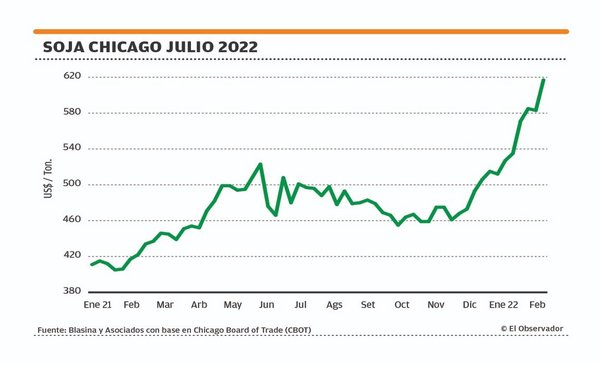Finally what was most feared happened, during this week Russian troops invaded Ukraine and commodity markets have additional volatility stemming from geopolitics: The Black Sea is where 40% of the wheat traded in the world and a significant proportion of the sunflower oil come from.
In this way, the prices that had already been rising due to the drought installed in Mercosur see more the movement of troops than the rains that belatedly arrived in some areas of Uruguay, in the south of Brazil, in areas of Argentina and in Paraguay. .
The price that rises the most, predictably, is that of wheatwhich has gone far above US$ 300 per ton, to even reach over US$ 340, a price that, if sustained, will greatly complicate non-oil importers in the Middle East, usually supplied by exports that leave through the Black Sea.
At once, the soybean market moved with extreme volatility, reaching 10-year highs on Thursday morning, but not holding up in the afternoon.
In any case, the oilseed maintains extraordinary prices, above US$600 per ton, while in the case of wheat, the high international price does not translate into Uruguayan prices, which remain above US$260 per ton, US$ 80 below the Chicago reference, while in the case of soybeans the same is paid as the international reference guideline.
EO
This week the rise in rice in Brazil continued to consolidatewhich settles above US$14.50 a bag on the border with Uruguay.
Some grain harvests have already taken place in Uruguay, where a slightly lower yield than last year’s record is expected.
The rains completely change the Uruguayan agricultural panorama. A good harvest of summer crops is almost assured.
In any case, the risk becomes somewhat greater due to excess rain than due to lack. Favorable paradoxes in a Girl year.
Everything leads one to think that good prices and good yields may coincide.
But in times of war nothing can be guaranteed.

john samuel
Soybean cultivation in Uruguay.
















